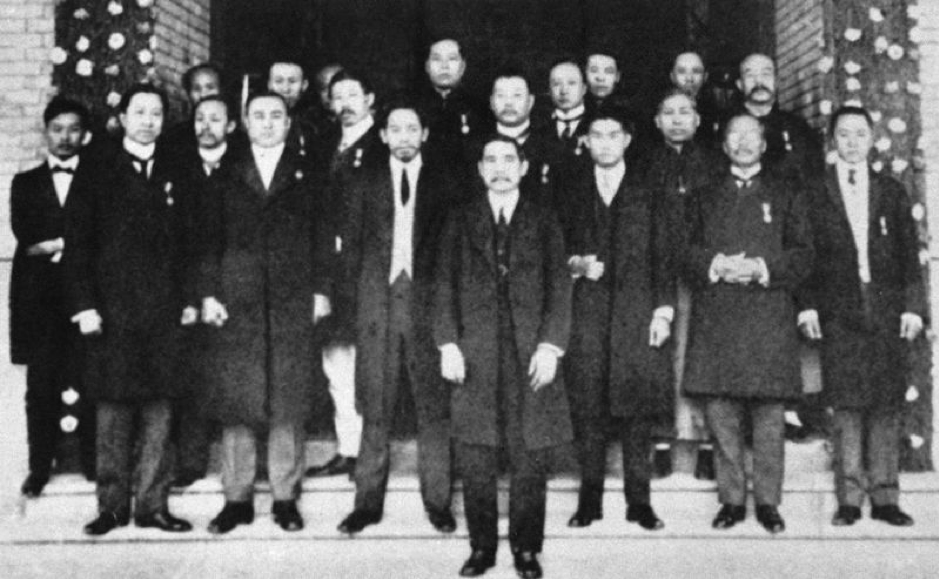
1912 Sun Yatsen inaugurated
The Chinese Revolution of 1911, also called Xinhai Revolution (辛亥革命) after the year of the Chinese calendar in which it occurred, was an uprising that led to the fall of the Qing Dynasty (1644-1911) and to the foundation of the Republic of China (中華民國, ROC). Sun Yat-Sen is inaugurated as president in 1912
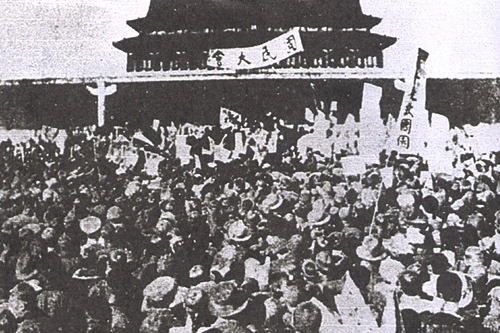
May 4, 1919 Protesters march in Beijing
On May 4, 1919 students in Beijing held a demonstration asking the government to refuse to sign the Versailles Peace Treaty. The Chinese delegation in Paris had four main goals during the negotiations: First, regaining control over the territories that were in German possession, and especially of Shandong. Second, the abrogation of the treaties and agreements that resulted from the Twenty-One Demands. Third, the cancellation of all economic and political interests of Germany and Austria-Hungary in China. And fourth, the revision and possible abolition of the unequal treaties
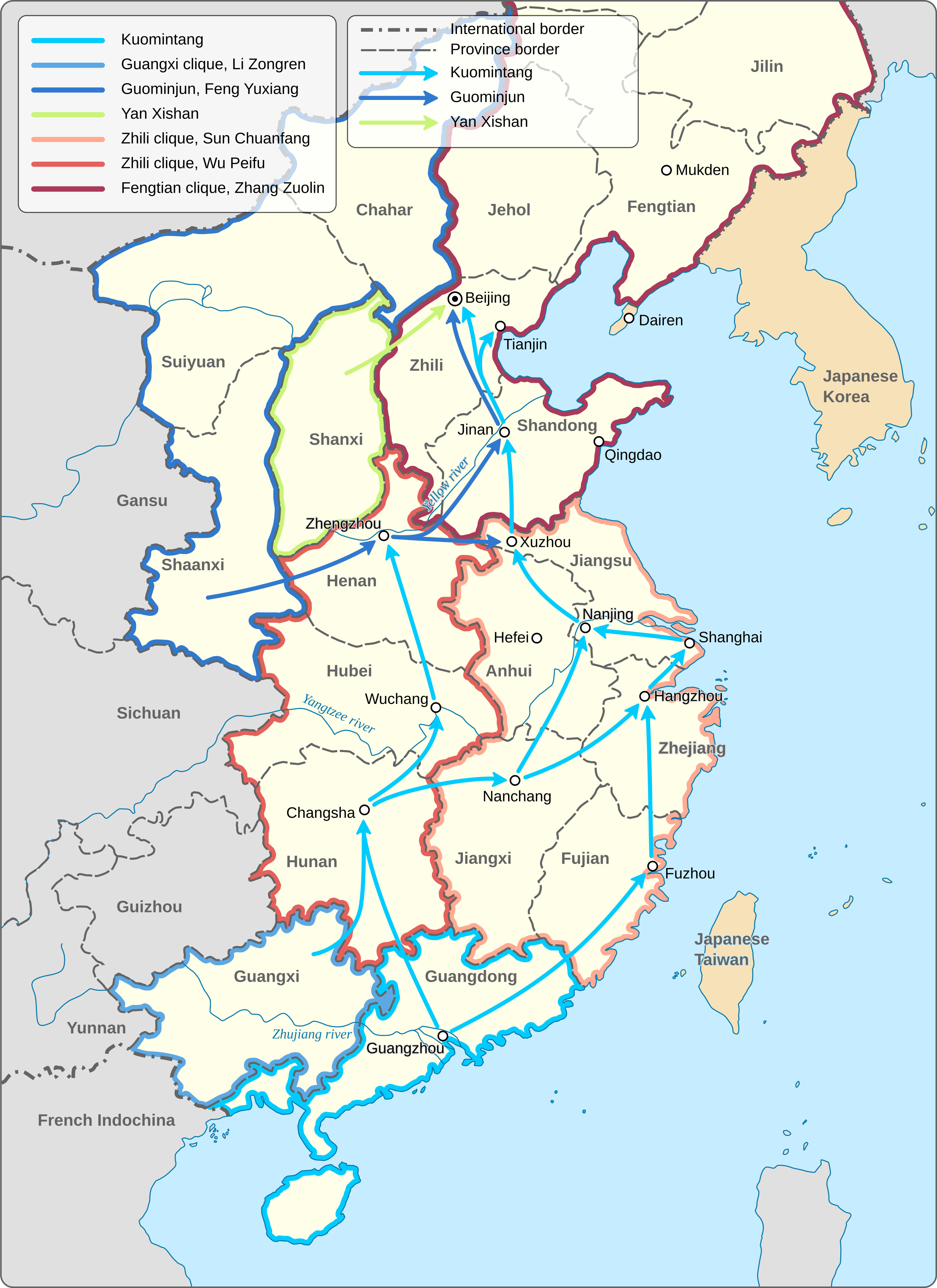
July 1926 - December 1928
The Northern Expedition
The Northern Expedition was a military campaign launched by the GMD against the Beiyang government and other Regional warlords in 1926. The purpose of the campaign was to reunify China, which had become fragmented in the aftermath of the Revolution of 1911
By Goran tek-en, CC BY-SA 4.0, https://commons.wikimedia.org/w/index.php?curid=73633676
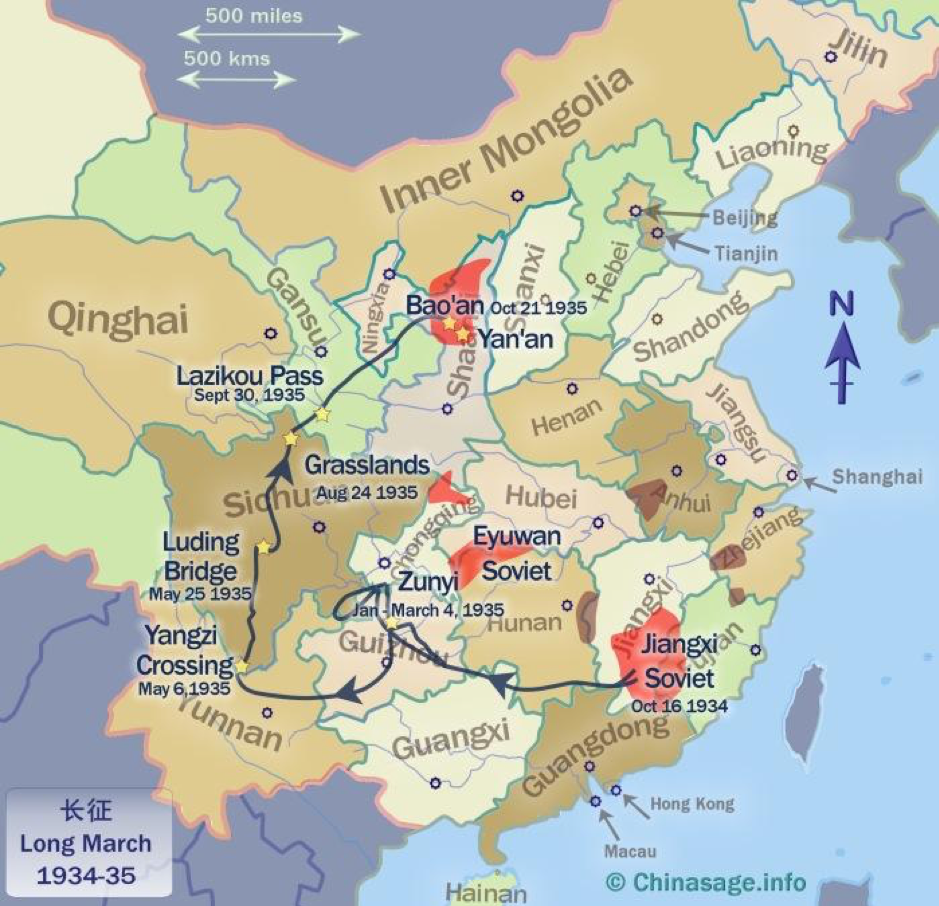
October 1934 - October 1935
Route of the Long March
The Long March (长征) was a military retreat undertaken by the Red Army of the CCP, to evade the pursuit of the National Army of the GMD. This map traces the year-long Communist exodus from Jiangxi to Yan'an highlighting important events along the way, in particular the Zunyi conference where Mao regained leadership of the party, advocating guerrilla warfare as the only viable technique to combat the Nationalists.
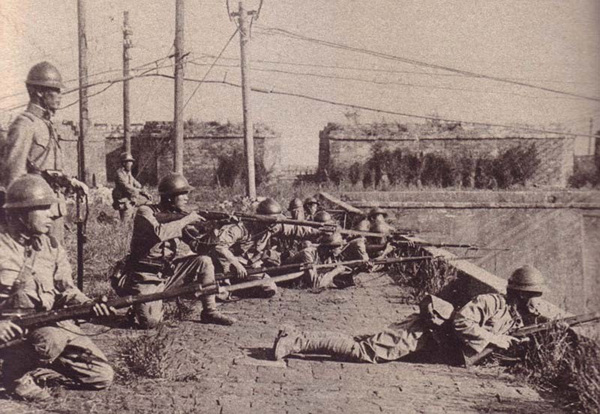
18 September 1931 – 28 February 1932
Japanese invasion of Manchuria
The Japanese army invaded Manchuria and established the puppet state of Manchukuo. In 1934 Puyi was declared emperor of Manchukuo but was as a puppet of Japan; he signed most edicts the Japanese gave him
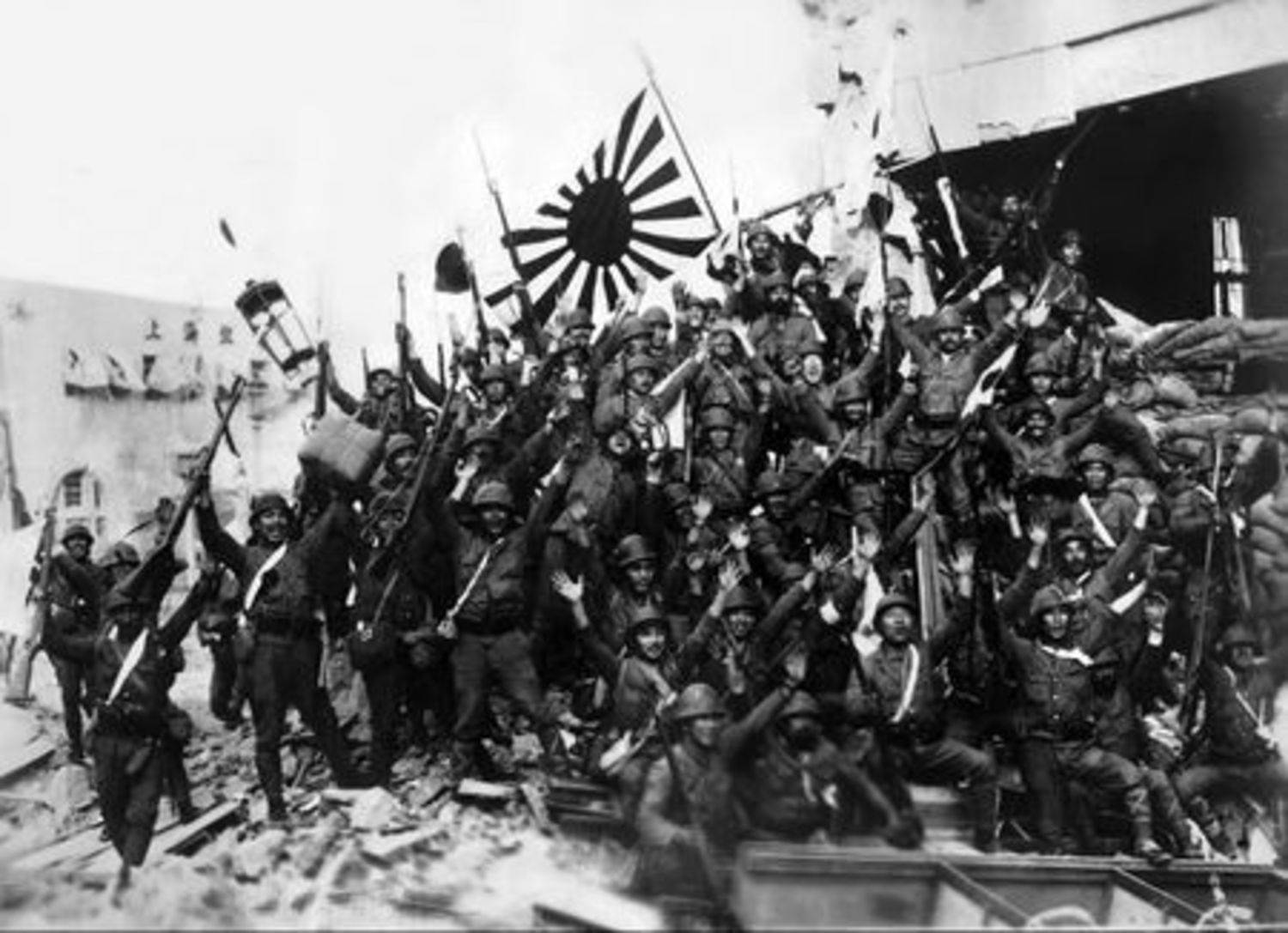
7 July 1937 – 2 September 1945 The Sino-Japanese War (抗日战争)
1937 Japanese soldiers celebrate victory at Shanghai
A military conflict primarily between the Republic of China and the Empire of Japan. The beginning of the war is conventionally dated to the Marco Polo Bridge Incident on 7 July 1937, when a dispute between Japanese and Chinese troops in Beijing escalated into a full-scale invasion
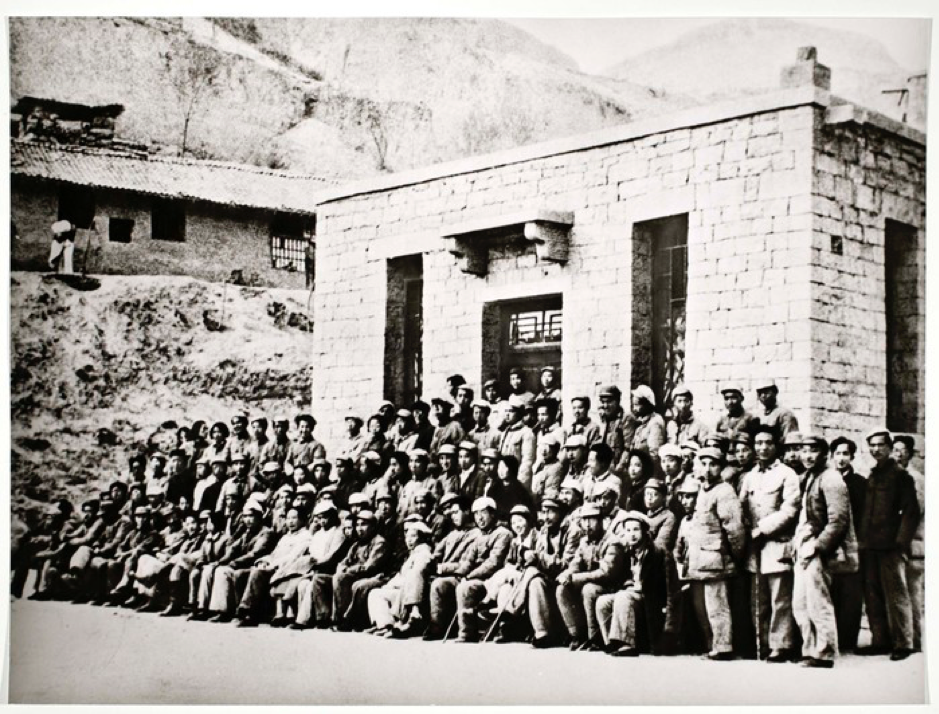
May 1942 The Yan'an Conference on Art and Literature
The purpose of the meeting is to make literature and art become a constructive part of the whole revolutionary machine; to use them as powerful weapons for uniting and educating the people and for crushing and destroying the enemy, as well as to help the people wage the struggle against the enemy with one heart and one mind.
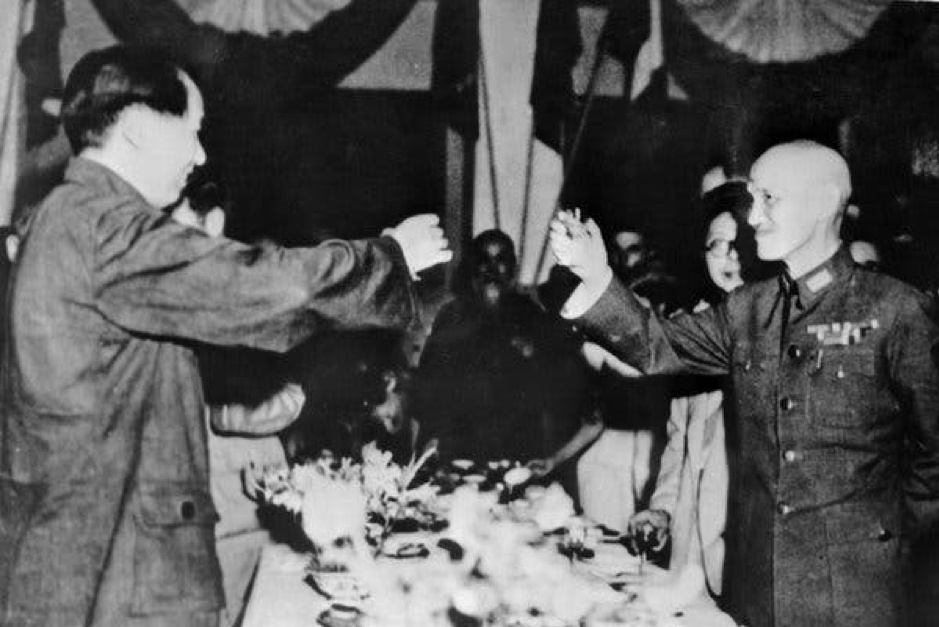
September 1945 Mao Zedong and Chiang Kai-Shek celebrate victory over Japan
Mao Zedong was persuaded to meet Chiang Kai-Shek in Chongqing by the Americans who acted as intermediaries in the hope of curbing the possibility of Civil War. Here, we can see the two toasting to each others success. Armed struggles continued between the two parties during the meetings and fully-fledged conflict would soon break out.
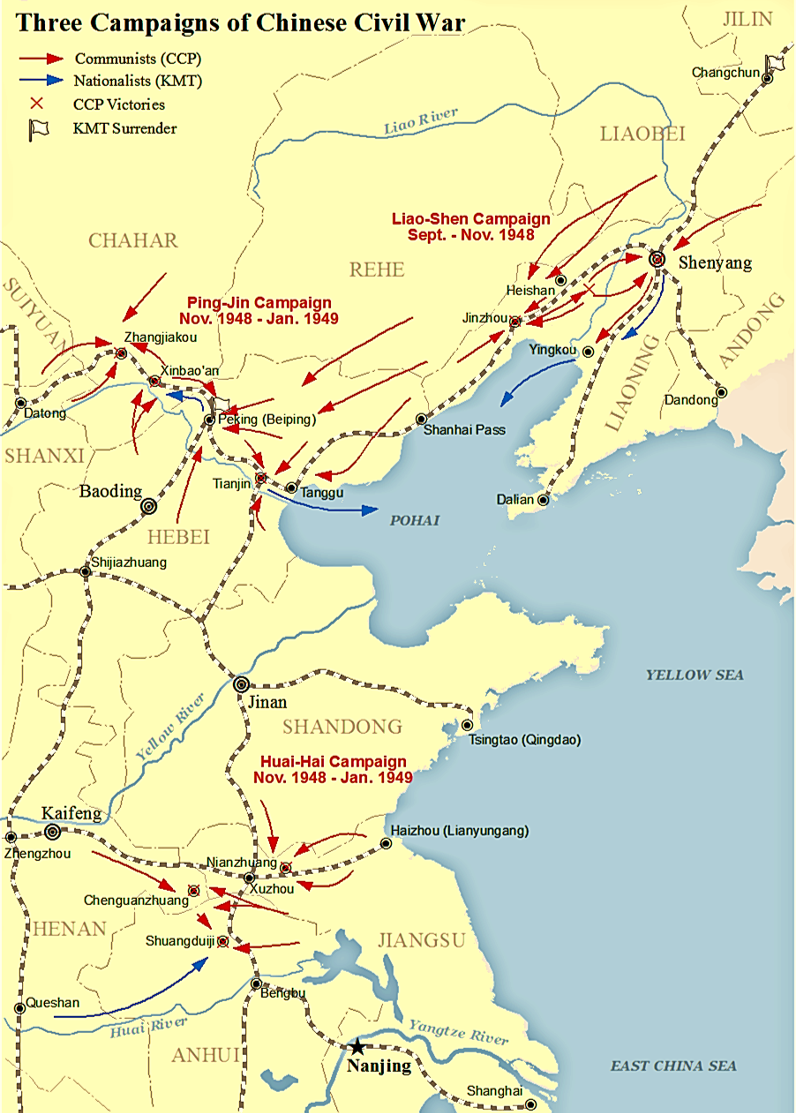
3 campaigns of the PLA during the civil war at the end of 1948
The Huaihai campaign (淮海戰役) 6 November 1948 – 10 January 1949 was one of the military conflicts in the late stage of the Chinese Civil War between the GMD and the CCP. At the end of the campaign the PLA reached the north of the Yangtze.